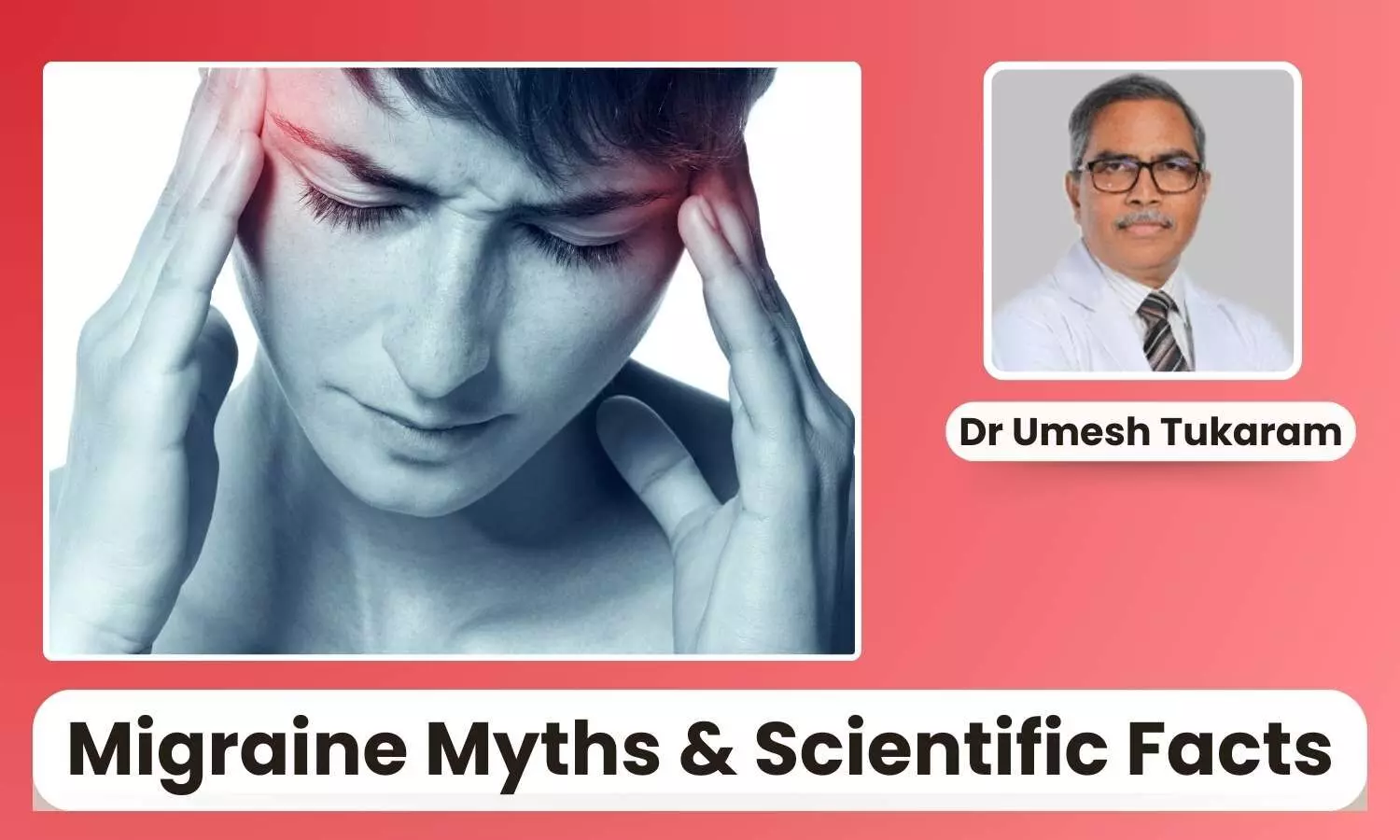Migraine Myths and Scientific Facts: What Everyone Should Know - Dr Umesh Tukaram

Migraines are among one of the most misunderstood neurological conditions, impacting millions worldwide. Despite noteworthy developments in medical exploration, misconceptions about migraines persistently spread, resulting in confusion and improper handling of the ailment.
Important details one of the most prevalent nervous system illnesses is a headache. According to age-standardized disability-adjusted life years (DALYs), headache disorders accounted for the third-highest burden of neurological disease in 2019, after stroke and dementia.
Recurrent headaches are the hallmarks of headache disorder, which are linked to financial costs, suffering, disability, and a diminished quality of life for both individuals and society.
Only a small percentage of patients with headaches receive the proper diagnosis and care from medical professionals worldwide. Around the world, headaches are underappreciated, underdiagnosed, and undertreated.
As a neurologist, I aim to debunk prevalent myths about migraines, highlight the latest investigational findings, and offer research-supported insights to assist people in more effectively coping with their headaches.
What is Migraine & Who Does it Affect?
Migraine is a type of headache disorder that is typically more episodic than continuous and can last anywhere from 4 to 72 hours. It commonly starts during puberty and primarily affects individuals between the ages of 35 and 45.
It occurs more frequently in women, likely due to hormonal factors. In children, migraines tend to be shorter in duration, with abdominal symptoms being more prominent.
Symptoms of Migraine
Symptoms of migraine can be seen in the individual with a headache that is moderate to severe in intensity, typically one-sided or behind the eye, with a pulsating quality.
It worsens with routine physical activity and lasts from hours to 2-3 days.
Symptoms often include sensitivity to light and sound, along with nausea.
Key Facts about Migraines
Migraines affect approximately one in seven people globally. They disproportionately impact women due to hormonal influences and can be triggered by stress, diet, sleep disruptions, and environmental stimuli. Importantly, they represent a neurological disorder rather than a reaction to poor lifestyle choices alone.
According to the research study The Associations Between Migraine, Unipolar Psychiatric Comorbidities, and Stress-related Disorders and the Role of Estrogen by B. Lee Peterlin, Michael J. Katsnelson, and Anne H. Calhoun, migraines have been associated with a variety of medical conditions, including hypertension, obesity, and stroke, as well as several psychiatric disorders such as depression and anxiety.
Additionally, recent findings suggest that stress-related conditions, including those stemming from abuse and posttraumatic stress disorder (PTSD), are also linked to the onset of migraines.
In my daily practice, I frequently encounter patients who present with complaints of headaches. After trying various medications, we often turn to a clinical psychologist to gain a deeper understanding of the patient's lifestyle, coping mechanisms, personality traits, and clinical pathology, and to offer psychological counseling. This comprehensive approach helps in addressing the underlying factors contributing to the headaches and provides a more holistic treatment plan.
According to another research study, Social Problem-Solving, Perceived Stress, Depression, and Life-Satisfaction in Patients Suffering from Tension-Type and Migraine Headaches by Mehmet Eskin, Ali Akyol, Emine Yilmaz Celik, and Bulent Kadri Gultekin, the results reveal that patients with tension-type headaches reported more frequent headaches than those with migraines.
However, migraine patients experienced more intense pain. Instances of psychiatric treatment were more common among those with tension-type headaches than among migraine patients or the control group.
Compared to healthy controls, headache patients exhibited deficiencies in problem-solving skills, along with higher levels of perceived stress and depression. Interestingly, the problem-solving skills of headache patients were inversely related to depression, perceived stress, and the number of negative life events, but positively correlated with life satisfaction.
Common Myths About Migraines
1. Migraines Are Just Bad Headaches
One of the nervous system disorders, migraine can last anywhere from four to seventy-two hours. Other headaches can have a variety of causes, such as medication overuse headaches, cluster headaches caused by blocked noses, tension headaches caused by stress, or musculoskeletal issues in the neck.
Research into the underlying mechanisms of migraine has found that activation of the trigeminovascular system is a key factor. Both genetic and environmental influences contribute significantly to the development of migraines. Migraine transpires in distinct phases and hampers daily routine, social life, and work productivity.
2. Only Women Get Migraines
The global prevalence of migraine, affecting both males and females, is estimated to be between 15% and 18%. It is a disabling condition, ranked eighth worldwide and fourth among women in terms of overall burden.
3. Caffeine always triggers migraines
Many migraine sufferers claim that a strong cup of coffee can help stop some of their attacks, which is not surprising. Caffeine is a key ingredient in many over-the-counter headache medications, such as Excedrin, Anacin, Midol, Darvon Compound, Fioricet, and Migranal.
Caffeine may help enhance the body’s absorption of these medications. Why not simply treat headaches with coffee? The issue is that caffeine’s effects on the brain vary significantly based on how frequently it’s consumed.
When used occasionally, it can provide mild relief for headaches and the usual boost of alertness and a sense of well-being. However, with daily or frequent caffeine use, the brain may build a tolerance, meaning the same amount of caffeine becomes less effective over time. Dependency can develop when the brain starts to expect a regular dose of caffeine.
4. Painkillers are the only treatment for migraines
That’s not entirely true. Along with the right medication, lifestyle changes play a crucial role in managing migraines. Without these changes, overusing medication can lead to more headaches.
Recent advancements in migraine research have led to promising treatment options and a deeper understanding of the condition. CGRP inhibitors, like erenumab, offer a breakthrough in preventing migraines by targeting the peptide responsible for pain and blood vessel dilation.
Additionally, non-drug solutions like Transcranial Magnetic Stimulation (TMS) are providing effective relief by using magnetic pulses to reset abnormal brain activity. Technological innovations, including AI-driven apps and wearable devices, enable personalized migraine management by tracking triggers and providing tailored recommendations.
To achieve robust migraine control, individuals should identify and avoid personal triggers, maintain consistent sleep hygiene, stay hydrated, and follow a balanced diet. For frequent sufferers, preventive medications and collaborative care with healthcare professionals can help customize treatment plans.
By debunking misconceptions and staying informed about new scientific developments, migraine sufferers can take a proactive approach to managing their condition through evidence-based strategies and lifestyle modifications.


